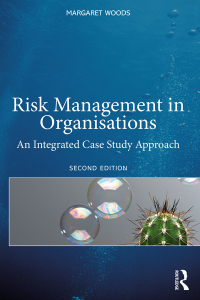Question
P Inc. purchased 80% of the voting shares of S Inc for $750,000 on January 1, 2018. On that date, S's common shares and retained
P Inc. purchased 80% of the voting shares of S Inc for $750,000 on January 1, 2018. On that date, S's common shares and retained earnings were valued at $300,000 and $150,000 respectively. Unless otherwise stated, assume that P uses the cost method to account for its investment in S Inc. S's fair values approximated its carrying values with the following exceptions:
S's trademark had a fair value which was $80,000 higher than its carrying value. S's bonds payable had a fair value which was $30,000 higher than their carrying value. The trademark had a useful life of exactly twenty years remaining from the date of acquisition. The bonds payable mature on January 1, 2038. Both companies use straight line amortization exclusively. The financial statements of both companies for the year ended December 31, 2020 are shown below: Income Statements
| P Inc. | S Inc. | |
| Sales | $640,000 | $520,000 |
| Other Revenues | $460,000 | $160,000 |
| Less: Expenses | ||
| Cost of Goods Sold | $480,000 | $390,000 |
| Depreciation Expense | $40,000 | $20,000 |
| Other Expenses | $80,000 | $40,000 |
| Income Tax Expense | $250,000 | $115,000 |
| Net Income | $250,000 | $115,000 |
Retained Earnings Statements
| P Inc. | S Inc. | |
| Balance, January 1, 2020 | $200,000 | $350,000 |
| Net Income | $250,000 | $115,000 |
| Less: Dividends | ($50,000) | ($65,000) |
| Retained Earnings, Dec 31, 2020 | $400,000 | $400,000 |
| Balance Sheets | ||
| P Inc. | S Inc. | |
| Cash | $100,000 | $150,000 |
| Accounts Receivable | $150,000 | $150,000 |
| Inventory | $200,000 | $150,000 |
| Investment in MIN Inc. | $750,000 | |
| Equipment (net) | $300,000 | $150,000 |
| Land | $100,000 | |
| Trademark | $300,000 | |
| Total Assets | $1,500,000 | $1,000,000 |
| Current Liabilities | $300,000 | $150,000 |
| Bonds Payable | $300,000 | $150,000 |
| Common Shares | $500,000 | $300,000 |
| Retained Earnings | $400,000 | $400,000 |
| Total Liabilities and Equity | $1,500,000 | $1,000,000 |
Other Information: A goodwill impairment test conducted during August 2020 revealed that the S's goodwill amount on the date of acquisition had been impaired by $5,000. During 2019, P sold $60,000 worth of inventory to S, 80% of which was sold to outsiders during the year. During 2020, P sold inventory to S for $80,000. 75% of this inventory was resold by S to outside parties during that year. During 2019, S sold $40,000 worth of Inventory to P, 80% of which was sold to outsiders during the year. During 2020, S sold inventory to P for $50,000. 80% of this inventory was resold by P to outside parties during that year. On April 1, 2020, P sold land to S for $100,000. P originally acquired the land for $40,000 in 2015. All intercompany sales as well as sales to outsiders are priced 25% on sales. The effective tax rate for both companies is 50%.
Required:
a) Prepare a schedule, in good form, and compute P's goodwill and the Non Controlling Interests (NCI) at the date of acquisition.
b) Prepare, in good form, the Acquisition Differential Amortization / Impairment Schedule for the year ended December 31, 2020
Step by Step Solution
There are 3 Steps involved in it
Step: 1

Get Instant Access to Expert-Tailored Solutions
See step-by-step solutions with expert insights and AI powered tools for academic success
Step: 2

Step: 3

Ace Your Homework with AI
Get the answers you need in no time with our AI-driven, step-by-step assistance
Get Started


